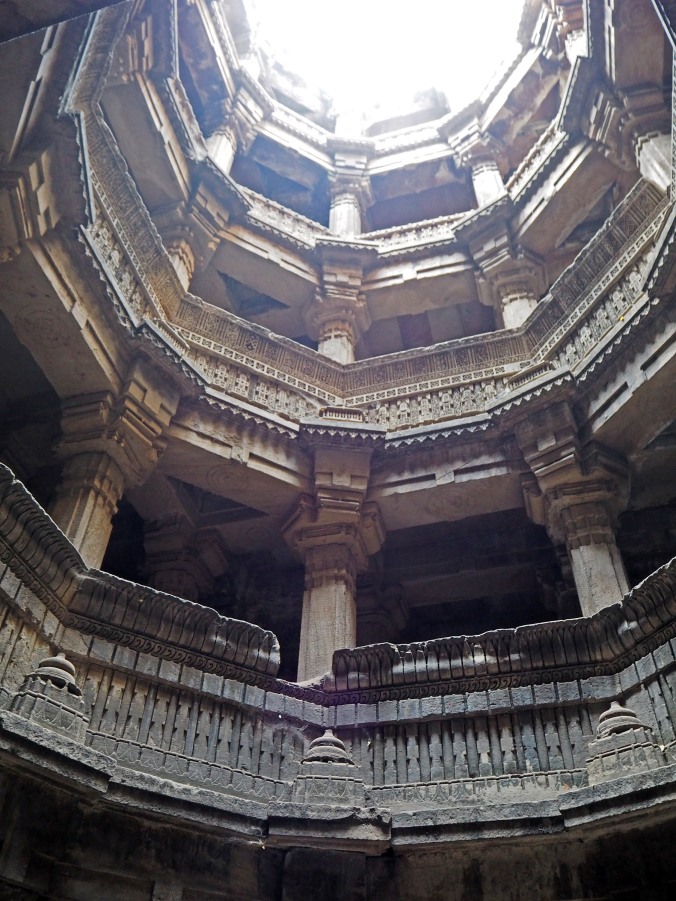Below Ahmedabad
February 2016
My second day in Ahmedabad has been busy, spending a lot of time in autoricks with the late winter breezes tangling my hair and rendering me a rather scruffy, but happy, individual. The mission today was to visit the wonderful Calico Museum of Textiles and stepwells Adalaj and Dada Harir Vav.
After a sustaining hotel Indian style breakfast with some excellent masala chai, I headed off to the museum, only to find that I had missed the one very controlled tour (restricted to 20 visitors) for the day and would have to book in for Monday. I’ve visited the museum on an earlier trip, but for serious lovers of textiles, one can never get enough of this place. It is one of the most celebrated institutions of its kind in the world for its distinguished and comprehensive collection of textiles and artefacts from all over India with some exhibits from other cultures including an Australian Aboriginal dillybag.
Unable to visit the museum, I was, however, able to visit both stepwells and am in awe of the skills of the engineers, designers and artisans who created these very practical structures. Stepwells are wells or ponds in which the water is reached by descending a set of steps. They are most common in western India, but are also found in the more arid regions of South Asia, extending into Pakistan. Stepwells are examples of the many types of storage and irrigation tanks that were developed in India, mainly to cope with seasonal fluctuations in water availability. They also provided a welcome cool place for people during the heat of summer. Unfortunately, most are now dry and out of use due to changes in weather patterns and the dropping of the water table.
Some stepwells are quite austere in their design (see Agrasen ki Baoli in Delhi), and then there are Adalaj and Dada Harir Vav. Both are a riot of intricately carved sandstone which after more than 500 years is amazingly crisp in most places. They have a lot of similarities in design, with Dada Harir Vav the more accessible in a quiet corner of old Ahmedabad near the Hazrat Harir Mosque. Just a stone’s throw from the railway line, a quiet dusty street lined with with chai and snack stalls leads to the unassuming entrance to this amazing monument.
One enters the stepwell area via a metal turnstile to a vista of not very interesting ground-level structures and an entrance portico with a view of the mosque in the background. Steps lead down to the well five stories deep, and it is here that the true beauty of the structure reveals itself: layer after layer of pillars surround the nine sided polygon shaped-well, and as one descends, the air is noticeably cooler, even though there is no longer any water in the well.

View from the top step of Dada Harir Vav. The eyes and the feet are drawn in and down with a sense of wonder. Note the beautifully cut flagstones fitting tightly together on the floor.
One would never guess from the streets above of the architectural treasures below.


